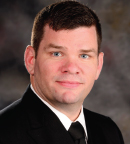According to estimates from the World Health Organization (WHO) and the International Agency for Research on Cancer (IARC), environmental toxic exposures are responsible for between 7% and 19% of human cancers. However, the 2008–2009 President’s Cancer Panel Annual Report estimated that the “true burden of environmentally induced cancers has been grossly underestimated.” While the amount of cancers related to chemical exposures is not easily defined, it has been scientifically verified that individual chemicals can independently enable many of the mechanisms of the carcinogenic process.
The Halifax Project
To date, the search for these substances has focused on complete carcinogens—chemicals that can cause cancer on their own. However, we now know that cancer is a disease in which multiple pathways are affected. So is it possible that cumulative exposures to mixtures of environmental chemicals at low doses might contribute to cancer by collectively disrupting or triggering some of the most important pathways that lead to carcinogenesis? That was the hypothesis examined by the Halifax Project, using 11 “Hallmarks of Cancer” (essential alterations in cell physiology that collectively dictate malignant growth) as a starting point.

Although there’s not a straight line from chemical exposure to cancer, studying environmental carcinogens is too important to be dismissed because it’s difficult.— Leroy Lowe, PhD
Tweet this quote
“We recruited 174 scientists from 26 countries to assess the potential role of low-dose chemical mixtures on the Hallmarks of Cancer. In total, the researchers reviewed 85 examples of chemicals for actions on key pathways/mechanisms related to carcinogenesis,” explained Leroy Lowe, PhD, President and cofounder of the nonprofit organization Getting to Know Cancer, which initiated the Halifax Project.
Asked about the WHO’s assessment that 7% to 19% of cancers are related to chemical exposure, Dr. Lowe responded, “Epidemiology is not an exact science. A study in the British Journal of Cancer1 found that only 43% of cancers are related to lifestyle and environmental factors. Sir Richard Peto, FRS, wrote the foreword to the Parkin et al study and I asked him what caused the other 57% of cancers, and he said, ‘Some of the remaining cancers are probably due to undiscovered avoidable causes.’ So it’s reasonable to postulate that a percentage of those cancers are related to the environment. Although there’s not a straight line from chemical exposure to cancer, studying environmental carcinogens is too important to be dismissed because it’s difficult.”
Synergistic Carcinogenesis
He noted, “Since targeted therapies are designed to interfere with specific molecules involved in cancer cell growth, the Halifax Project looked at single chemicals that could enable/activate key driver mechanisms in cancers.”
Dr. Lowe explained that most research on low-dose chemical exposure looks at precise mechanisms relevant for carcinogenesis. “We test for safety one chemical at a time using a 2-year rodent study, which is the gold standard. They studied high doses of chemicals in their models and moved to lower doses until reaching a dose that no longer caused cancer. And that level is the safety margin for the chemical we put on foods. But we know that multiple mechanisms are at play in cancer biology. Therefore, a single chemical, which might not be carcinogenic on its own, could still enable a critical mechanism or pathway that is highly relevant in the multistep, multistage carcinogenic progression that leads to cancer.”
Dr. Lowe pointed to a study led by Nicole Kleinstreuer, PhD, Deputy Director of the National Toxicology Program’s Interagency Center for the Evaluation of Alternative Toxicological Methods. Dr. Kleinstreuer and her colleagues had already tested 776 unique environmental and industrial chemicals. They chose 8 human primary cell systems, based on their sensitivity to specific drug mechanisms and adverse effects, and recorded 87 different measurements, resulting in 306,240 individual data points.
“Then the researchers put thousands of high-throughput screening assays on a giant spreadsheet and sorted them by mechanistic actions. Their hypothesis was simple: If a single chemical reacts in an enabling way on a high number of in vitro tests, it is likely to be more carcinogenic than one that doesn’t. They then put all the chemicals on a giant spreadsheet in columns related to in vitro testing correlated with key mechanisms in the hallmark areas,” explained Dr. Lowe.
He continued, “Then they added them up to see which chemicals hit the most hallmarks and compared them against the same chemicals that were assessed from the 2-year rodent studies.2 They were right: If a chemical acted in an enabling fashion on mechanisms across a high number of hallmark areas, it was more likely to be carcinogenic than a chemical that didn’t hit as many hallmarks.”
Dr. Lowe contacted Dr. Kleinstreuer and posed a question: “You examined single chemicals for their carcinogenic propensity, but the general population is constantly exposed to low doses of all the chemicals you tested. Aren’t mixtures of these chemicals a concern, too? She said they prioritized and looked at single chemicals. The research on mixtures of low-dose chemicals wasn’t there yet. Dr. Kleinstreuer ended up joining our project.”
Environment and Oncology

Practicing oncologists are too busy treating their patients to get involved with this issue, and the institutions that allocate money for research, for various reasons, don’t want to fund this work.— William H. Goodson III, MD
Tweet this quote
In an interview with The ASCO Post, William H. Goodson III, MD, Senior Scientist at California Pacific Medical Center Research Institute, San Francisco, and one of the lead researchers on the Halifax Project, explained:
The oncology community has little interest in environmental carcinogens, because it’s very difficult to link a cancer to low-dose exposures. However, if I had a drug that had no known side effects, and it decreased the cancer cell growth rate by 50% and increased cancer cell death from tamoxifen exposure by 50%, you’d be very interested in that drug. That’s exactly what happens when you take cancer cells away from the chemicals we are exposed to every day. Since removing cancer cells from chemicals has this effect, taking away chemicals should be investigated thoroughly. We have shown these effects with MCF7 and T47D malignant [estrogen receptor–positive] cells and benign but high-risk breast epithelial cells from human volunteers.
He continued, “The screening tests so far have looked at whether a particular chemical induces cell proliferation, and if it doesn’t accelerate cell growth, nobody pays attention and that may miss harmful effects. For example, terephthalic acid (from #1 plastics) suppresses the S-phase but promotes evasion of apoptosis and DNA damage.3 Practicing oncologists are too busy treating their patients to get involved with this issue, and the institutions that allocate money for research, for various reasons, don’t want to fund this work.”
Asked if we have the methodology to screen cancer-causing chemicals, Dr. Goodson replied, “It’s a big challenge. For one, epidemiology studies are limited because there is no control group unless you find a cohort of people living off in remote mountains who have had no exposure to dangerous chemicals.”
He also explained that studies looking at the incidence of breast cancer have been overinterpreted. Dating back to the 1980s, work by the famed epidemiologists Sir Richard Doll, CH, OBE, FRS, and Sir Richard Peto, FRS, found a 20% rise in the incidence of invasive breast cancer between 1950 and the early1970s, which they concluded was due to lifestyle issues and overdiagnosis.4
“Similarly, a large study5 looking at invasive breast cancer incidence over the next 30 years (from 1973 to 2008) showed that—aside from a little downtick—we’ve stabilized at an incidence level about another 25% higher than 30 years ago. Again, the researchers concluded that this rise in incidence was due to lifestyle issues and overdiagnosis from mammograms.6 But it is hard to believe that a doubling of breast cancer incidence from 60 to 70/100,0004 in 1950 to 125/100,000 in 20105 is all due to lifestyle issues and overdiagnosis with mammograms,” said Dr. Goodson.
The NIEHS Weighs In

At this point, the data supporting the low-dose hypothesis are relatively limited. But by identifying the tools needed to begin testing this hypothesis, we are gaining momentum behind the concept, so the research community can get on board for a collective effort.— Mark F. Miller, PhD
Tweet this quote
To get the government’s perspective on environmental carcinogens, The ASCO Post spoke with Mark F. Miller, PhD, Chief of Staff at the National Institute of Environmental Health Sciences (NIEHS). Dr. Miller has worked with Drs. Goodson, Lowe, and others on the low-dose chemical exposure hypothesis. His work has centered on determining the effects of low-dose exposure, with special emphasis on the endocrine system. He has also researched the effects of exposure to mixtures of low-dose chemicals.
Asked about the progress in this area, Dr. Miller responded, “I think we’ve identified a set of important research questions that can be answered in a systematic way. At this point, the data supporting the low-dose hypothesis are relatively limited. But by identifying the tools needed to begin testing this hypothesis, we are gaining momentum behind the concept, so the research community can get on board for a collective effort.”
Dr. Miller explained that it is very difficult to identify and quantify the effects of low-dose exposures. “However, the more we look into the mechanisms of different cancers and their origination, we can see that the environment is playing a greater role. Each time we look into a new area of low-dose exposures, we’re seeing these gene interactions becoming more important in the formation of the initial cancer as well as its severity. There’s a lot of work to be done, but we’re gaining support.”
Conclusions
The effort to identify individual chemicals and other carcinogenic agents such as tobacco, benzene, asbestos, aflatoxins, and many more has been successful and saved countless lives. However, little has been done to determine if long-term exposures to mixtures of “noncarcinogenic” chemicals in the environment at low-dose levels have carcinogenic potential. Many chemicals amass in body tissue over time, but little is understood about their combined effects at a mechanistic level and how they affect cancer-related mechanisms and carcinogenesis.
Although more difficult than identifying single-source carcinogens, low-dose and mixed chemical exposures are no less a public health issue. The Halifax Project has moved this issue ahead and helped garner attention to this discreet area of oncology. ■
Disclosure: Drs. Lowe, Goodson, and Miller reported no potential conflicts of interest.
References
6. Committee on Breast Cancer and the Environment: Breast cancer and the environment: A life course approach. Institute of Medicine, Washington, DC. 2012. Available at www.nap.edu/read/13263/chapter/2. Accessed May 11, 2016.

